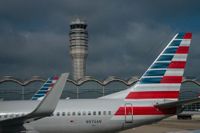The Federal Aviation Administration (FAA) is grappling with a new challenge after launching a massive recruitment drive to address a shortage of air traffic controllers: it now lacks enough instructors to train the influx of new recruits. This unexpected bottleneck is threatening to undermine efforts to shore up the workforce responsible for keeping America’s skies safe and orderly.
According to multiple reports, including a detailed account by The New York Times, the FAA’s initial problem was clear. For months, the agency had been sounding the alarm about a dwindling pool of air traffic controllers, the highly trained professionals who monitor and direct the thousands of flights crossing U.S. airspace each day. In response, the FAA rolled out an ambitious hiring campaign, hoping to attract a new generation of controllers to fill the gap.
But as the recruitment campaign gained traction, another issue emerged. As of August 27, 2025, the FAA is facing a shortage of instructors at its Oklahoma City training academy, the critical hub where new hires learn the ropes before taking their posts in control towers and radar rooms around the country. Without enough qualified teachers, the agency’s efforts to replenish its ranks are hitting a wall.
Most of the instructors at the Oklahoma City academy are retired former controllers, many now in their 60s. These seasoned veterans bring decades of experience to the classroom, offering real-world insights and hard-earned wisdom to the next wave of aviation professionals. However, they’re increasingly being asked to work longer hours, with shifts starting as early as 7 a.m., as the academy scrambles to keep up with the surge in trainees.
“We’re doing everything we can to meet the demand,” said one instructor, who asked not to be named due to the sensitivity of the situation. “But there are only so many hours in the day, and only so many of us to go around.”
This instructor shortage has far-reaching implications. Training an air traffic controller is no small feat; it requires months of rigorous classroom instruction, simulations, and on-the-job shadowing before a recruit is ready to direct real-world traffic. Without enough instructors, the pipeline slows, and the FAA’s ability to deploy new controllers where they’re needed most is compromised.
According to The Washington Post, the FAA’s recruitment drive was supposed to be a turning point. After years of attrition and retirements, the agency hoped to reverse the trend and build a more resilient workforce. The instructor shortage, however, has introduced fresh uncertainty into the process.
“It’s a classic case of solving one problem only to create another,” said an aviation industry analyst quoted by Reuters. “The FAA has plenty of eager new recruits, but if they can’t be trained quickly and effectively, the shortage of controllers will persist.”
The stakes couldn’t be higher. Air traffic controllers play a vital role in the nation’s transportation infrastructure, ensuring that planes take off, land, and cross paths safely. Any disruption in the training pipeline could have ripple effects on flight schedules, airport operations, and even passenger safety.
At the heart of the issue is the unique skill set required to teach air traffic control. Not just anyone can step into the role of instructor; it takes years of hands-on experience, a deep understanding of procedures and regulations, and the ability to communicate complex concepts clearly. Many of the current instructors are drawn from the ranks of recently retired controllers, but the pool of eligible candidates is limited—and shrinking as the workforce ages.
“We’re proud of the work we do, but it’s getting harder to keep up,” said another instructor at the Oklahoma City academy. “There are days when it feels like we’re running on fumes.”
The FAA is reportedly exploring several options to address the instructor shortfall. These include offering incentives to attract more retired controllers back into the fold, expanding the use of simulation technology to supplement live instruction, and streamlining certain aspects of the training curriculum without compromising safety or quality.
Some industry observers have suggested that the agency should also consider recruiting instructors from related fields, such as military air traffic control, where many personnel have extensive experience but may not have followed traditional FAA career paths. Others argue that the solution lies in longer-term workforce planning, with a greater emphasis on succession and mentorship programs to ensure a steady supply of qualified teachers.
Meanwhile, the pressure on existing instructors is mounting. With the academy running at full tilt, many teachers are working extended hours and juggling larger class sizes than ever before. The risk of burnout is real, and some worry that the quality of training could suffer if the situation isn’t addressed soon.
“We want to give every recruit the attention and guidance they need,” said a veteran instructor. “But there’s only so much we can do before something has to give.”
The FAA’s predicament has not gone unnoticed by lawmakers and industry stakeholders. Several members of Congress have called for additional funding and resources to support instructor recruitment and retention, warning that the nation’s air traffic control system cannot afford further delays or disruptions.
Airlines, too, are watching the situation closely. With travel demand rebounding after the pandemic and flight schedules returning to pre-2020 levels, carriers are counting on a robust and well-trained controller workforce to keep operations running smoothly. Any slowdown in the training pipeline could lead to delays, cancellations, and increased costs across the industry.
For now, the FAA is urging patience and pledging to do everything possible to resolve the instructor shortage. “We recognize the importance of this issue and are actively working to expand our instructor ranks,” an agency spokesperson told USA Today. “Our top priority is ensuring the safety and efficiency of the National Airspace System.”
As America’s skies grow busier and the demand for air travel continues to climb, the need for skilled air traffic controllers—and the instructors who train them—has never been more acute. The FAA’s recruitment drive was meant to be a solution, but it’s become clear that solving the controller shortage will require more than just hiring new faces. Without enough teachers to guide them, the next generation of controllers may find themselves grounded before they ever take flight.




